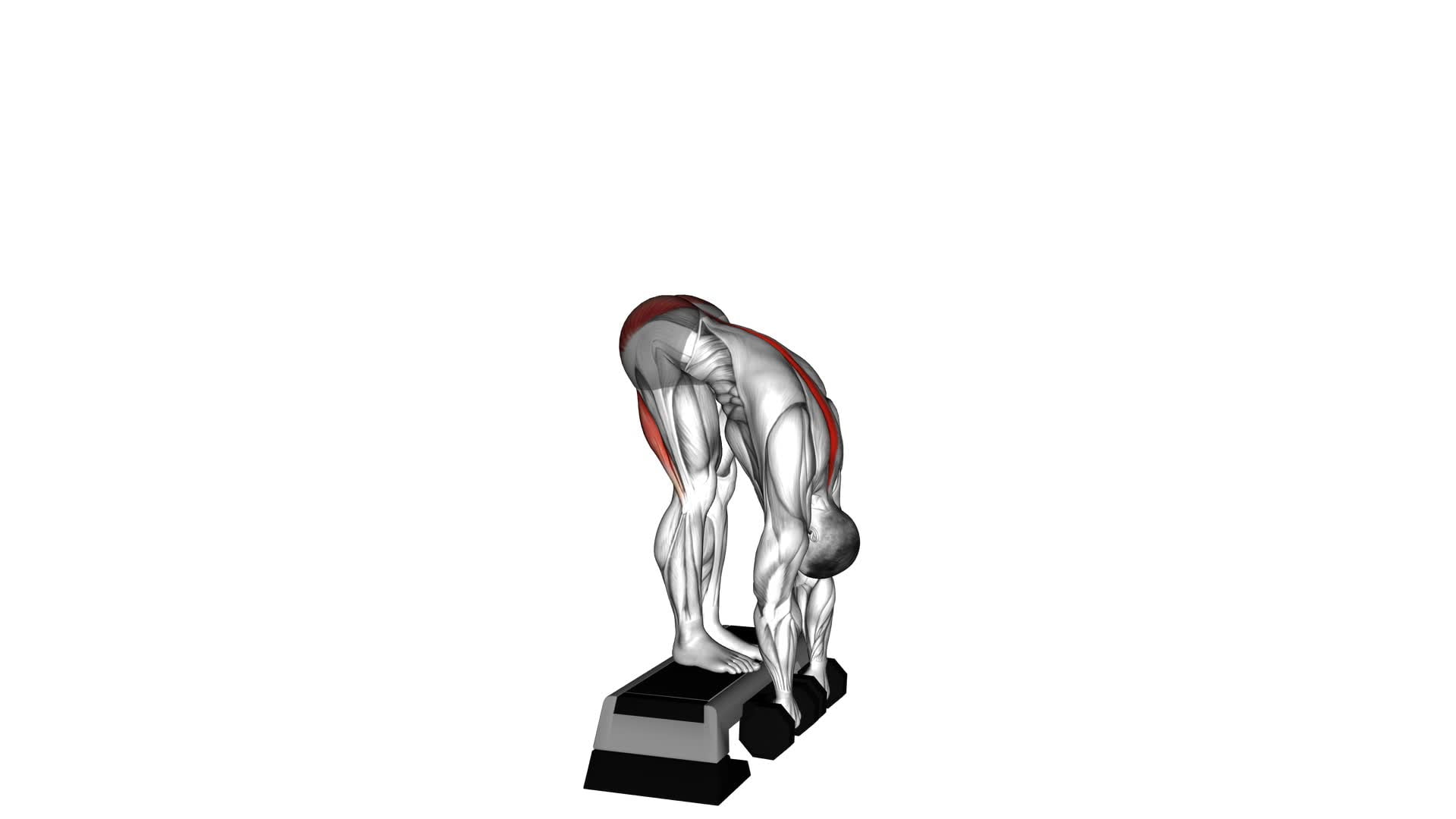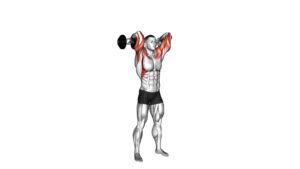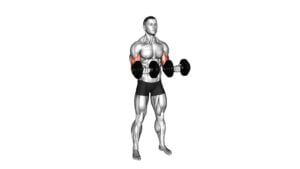Dumbbell Jefferson Curl (male) – Video Exercise Guide & Tips

Are you looking to strengthen your back and improve flexibility? The Dumbbell Jefferson Curl is the perfect exercise for you. In this video exercise guide, we will show you proper form and technique to get the most out of this exercise.
Watch This Exercise Video
With recommended weight and repetitions, you can avoid common mistakes and achieve optimal results. Plus, we'll provide tips for progression and variation to keep challenging yourself.
Get ready to take your fitness to the next level!
Key Takeaways
- Improved flexibility and spinal mobility
- Increased flexibility of hamstrings, glutes, and lower back
- Enhanced core strength and stability
- Reduced risk of injury
Benefits of the Dumbbell Jefferson Curl
You can experience improved flexibility and spinal mobility with the Dumbbell Jefferson Curl. This exercise provides a range of stretching benefits, helping to increase the flexibility of your hamstrings, glutes, and lower back. By lowering the dumbbells in a controlled manner, you can lengthen these muscles, promoting better range of motion and reducing the risk of injury.
Additionally, the Dumbbell Jefferson Curl is an effective way to develop core strength. As you perform the exercise, your core muscles, including your abdominals and obliques, work to stabilize your spine. This not only strengthens your core but also improves your overall stability and posture.
Incorporating the Dumbbell Jefferson Curl into your workout routine can have numerous benefits for your body. Not only does it improve flexibility and spinal mobility, but it also enhances core strength development. By regularly performing this exercise, you can expect to see improvements in your overall flexibility, reduced risk of injury, and enhanced core stability.
Remember to start with lighter dumbbells and gradually increase the weight as you become more comfortable and proficient in the movement.
Proper Form and Technique
To perform the Dumbbell Jefferson Curl with proper form and technique, focus on maintaining a neutral spine throughout the movement. This is crucial to ensure that you're effectively targeting the muscles in your back and avoiding any potential injuries. Common misconceptions about this exercise include rounding or arching the back instead of keeping it in a neutral position. Remember to engage your core and keep your shoulders down and relaxed throughout the entire movement.
An alternative exercise to the Dumbbell Jefferson Curl is the traditional barbell Jefferson Curl. This exercise involves using a barbell instead of dumbbells and allows for a greater range of motion. However, it's important to note that the barbell Jefferson Curl requires a higher level of strength and flexibility, so it may not be suitable for beginners.
If you're new to this exercise or have any pre-existing back issues, it's recommended to start with the Dumbbell Jefferson Curl and gradually progress to the barbell version as you become more comfortable and confident.
Recommended Weight and Repetitions
Maintain a neutral spine and engage your core while performing the Dumbbell Jefferson Curl to effectively target the muscles in your back and prevent injuries.
When it comes to selecting the optimal weight for this exercise, it's important to find a weight that challenges you without compromising your form.
Here are some recommendations to help you determine the appropriate weight and repetitions for the Dumbbell Jefferson Curl:
- Start with a lighter weight and gradually increase as you become more comfortable with the movement.
- Aim for a weight that allows you to perform the exercise with proper form and technique throughout the entire range of motion.
- Listen to your body and adjust the weight accordingly. If you feel any pain or discomfort, decrease the weight or seek guidance from a fitness professional.
- Remember, quality over quantity. It's better to perform fewer repetitions with good form than to do more repetitions with poor form.
- Modify the exercise as needed. If you find the Dumbbell Jefferson Curl too challenging, you can start with a bodyweight variation or use lighter dumbbells until you build up strength and stability.
Common Mistakes to Avoid
One common mistake to avoid when performing the Dumbbell Jefferson Curl is using excessive weight. It's important to remember that this exercise focuses on proper alignment and controlled movement rather than heavy lifting. Using too much weight can put unnecessary strain on your lower back and increase the risk of injury. Instead, start with a lighter weight that allows you to maintain proper form throughout the entire movement.
Another common mistake to avoid isn't maintaining proper alignment throughout the exercise. It's crucial to keep your spine straight and engage your core muscles to protect your back. Avoid rounding your back or allowing your shoulders to slump forward. Additionally, make sure to keep your knees slightly bent and your feet shoulder-width apart for stability.
Lastly, rushing through the exercise is a common mistake that should be avoided. The Dumbbell Jefferson Curl requires slow and controlled movement to fully engage the muscles and prevent injury. Take your time to lower the dumbbells towards the ground, feeling a stretch in your hamstrings and maintaining proper alignment. Remember to listen to your body and stop if you feel any pain or discomfort.
Tips for Progression and Variation
To enhance your progress and add variety to your workouts, consider incorporating these tips for progression and variation into your Dumbbell Jefferson Curl routine:
- Increase the weight gradually: As you become more comfortable with the exercise, gradually increase the weight of the dumbbell to challenge your muscles and promote further progression.
- Focus on form and control: Prioritize maintaining proper form and control throughout the movement. This will help prevent injury and ensure that you're effectively targeting the intended muscles.
- Experiment with different tempos: Varying the tempo of your reps can provide a new stimulus to your muscles. Try slowing down the eccentric portion of the movement or adding pauses at different points to increase the intensity.
- Incorporate unilateral variations: In addition to performing the exercise bilaterally, try using one dumbbell at a time. This can help identify and correct any imbalances in strength or flexibility between your left and right sides.
- Explore alternative exercises: While the Dumbbell Jefferson Curl is a great exercise for targeting the posterior chain, it's always beneficial to incorporate other exercises that target the same muscle groups. Consider adding exercises like Romanian deadlifts or hyperextensions to your routine for further progression and variation.
Frequently Asked Questions
Are There Any Alternatives to the Dumbbell Jefferson Curl Exercise?
If you're looking for alternatives to the dumbbell Jefferson curl exercise, there are a few variations you can try.
These variations can target similar muscle groups and provide a similar range of motion.
Some options include using a barbell or kettlebell instead of dumbbells, or even performing the exercise without any weights at all.
Remember to start with lighter weights and gradually increase as you become more comfortable and confident with the movement.
Can the Dumbbell Jefferson Curl Help Improve Flexibility in the Lower Back?
Yes, the dumbbell Jefferson curl can help improve flexibility in your lower back. By performing this exercise, you aren't only targeting your hamstrings but also promoting spinal mobility.
The controlled movement of slowly curling your spine forward and backward with the dumbbells allows for a deep stretch in the muscles of your lower back.
This exercise can be an effective way to enhance your hamstring flexibility and overall range of motion in the spine.
Is It Safe to Perform the Dumbbell Jefferson Curl if I Have a History of Lower Back Pain?
Performing the dumbbell Jefferson curl with a history of lower back pain can pose potential risks. It's important to prioritize your safety and consult with a healthcare professional or a certified trainer. They can provide alternative exercises that target the same muscle groups without putting excessive strain on your lower back.
How Often Should I Incorporate the Dumbbell Jefferson Curl Into My Workout Routine?
To get the most out of your workout routine, consider incorporating the dumbbell Jefferson curl. This exercise has numerous benefits, such as improving flexibility and strengthening your posterior chain.
When deciding how often to do this exercise, it's important to listen to your body and start slowly. Begin by incorporating it once or twice a week and gradually increase the frequency as you feel comfortable.
Remember to maintain proper form and consult with a fitness professional if you have any concerns.
Can the Dumbbell Jefferson Curl Help With Improving Posture?
Improving your posture is a common goal, and the dumbbell Jefferson curl can be a helpful exercise for achieving it.
By engaging your back muscles and stretching your spine, this exercise can promote better alignment and posture over time.
The benefits of the dumbbell Jefferson curl extend beyond posture improvement, as it also strengthens your core and increases flexibility.
Incorporating this exercise into your routine a few times a week can have significant benefits for your overall posture and well-being.
Conclusion
In conclusion, the Dumbbell Jefferson Curl is a beneficial exercise for improving flexibility and strength in the lower back and hamstrings. By maintaining proper form and using the recommended weight and repetitions, individuals can reap the full benefits of this exercise.
It's important to avoid common mistakes and follow tips for progression and variation to continue challenging the muscles. Incorporating the Dumbbell Jefferson Curl into your workout routine can contribute to overall physical fitness and performance.

Author
Years ago, the spark of my life’s passion ignited in my mind the moment I stepped into the local gym for the first time. The inaugural bead of perspiration, the initial endeavor, the very first surge of endorphins, and a sense of pride that washed over me post-workout marked the beginning of my deep-seated interest in strength sports, fitness, and sports nutrition. This very curiosity blossomed rapidly into a profound fascination, propelling me to earn a Master’s degree in Physical Education from the Academy of Physical Education in Krakow, followed by a Sports Manager diploma from the Jagiellonian University. My journey of growth led me to gain more specialized qualifications, such as being a certified personal trainer with a focus on sports dietetics, a lifeguard, and an instructor for wellness and corrective gymnastics. Theoretical knowledge paired seamlessly with practical experience, reinforcing my belief that the transformation of individuals under my guidance was also a reflection of my personal growth. This belief holds true even today. Each day, I strive to push the boundaries and explore new realms. These realms gently elevate me to greater heights. The unique combination of passion for my field and the continuous quest for growth fuels my drive to break new ground.







